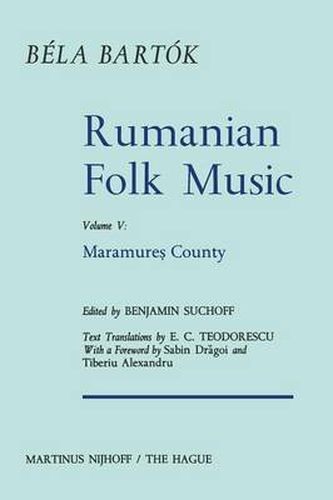Readings Newsletter
Become a Readings Member to make your shopping experience even easier.
Sign in or sign up for free!
You’re not far away from qualifying for FREE standard shipping within Australia
You’ve qualified for FREE standard shipping within Australia
The cart is loading…






This title is printed to order. This book may have been self-published. If so, we cannot guarantee the quality of the content. In the main most books will have gone through the editing process however some may not. We therefore suggest that you be aware of this before ordering this book. If in doubt check either the author or publisher’s details as we are unable to accept any returns unless they are faulty. Please contact us if you have any questions.
he wealth and variety of artistic creations evolved by the Ru- T manian people in the course of the centuries have long alerted the interest of foreign scholars whom circumstances brought to the lands of the Rumanians. The Polish chronicler Matthew Stryjcovski (16th century), the Genovese Franco Sivori, secretary of the 16th century reigning prince Petru Cercel, the Magyar poet Balassius (Balassa Balint 16th century), Paul Strassburg, the envoy of Sweden’s 17th century King Gustav Adolph, the Silesian poet Martin Opitz (17th century), the German Johannes Troester (17th century), and many others have left us many accounts, often praises, all precious testimonials providing a better knowledge of past times. The first notations of Rumanian popular melodies known to us like- wise go back to the 16th and 17th centuries. The tablatures for organ left by the musician Jan of Lublin, by the Franciscan monk John Caioni, who was of Rumanian origin himself, and by Daniel Speer, and, indeed, those recorded in the manuscript known to musicologists as the Codex Vietoris, are not, however, to be considered as true collections of folklore. Nor do the ten Walachische Tanze und Lieder collected and published in Western notation by the Austrian Franz Joseph Sulzer, in the second volume of his Geschichte des Transalpinischen Daciens, das ist: der Wala- chei, M oldau, und Bassarabiens, printed in Vienna in 1781, come under the heading of a folklore collection as we understand the term today.
$9.00 standard shipping within Australia
FREE standard shipping within Australia for orders over $100.00
Express & International shipping calculated at checkout
This title is printed to order. This book may have been self-published. If so, we cannot guarantee the quality of the content. In the main most books will have gone through the editing process however some may not. We therefore suggest that you be aware of this before ordering this book. If in doubt check either the author or publisher’s details as we are unable to accept any returns unless they are faulty. Please contact us if you have any questions.
he wealth and variety of artistic creations evolved by the Ru- T manian people in the course of the centuries have long alerted the interest of foreign scholars whom circumstances brought to the lands of the Rumanians. The Polish chronicler Matthew Stryjcovski (16th century), the Genovese Franco Sivori, secretary of the 16th century reigning prince Petru Cercel, the Magyar poet Balassius (Balassa Balint 16th century), Paul Strassburg, the envoy of Sweden’s 17th century King Gustav Adolph, the Silesian poet Martin Opitz (17th century), the German Johannes Troester (17th century), and many others have left us many accounts, often praises, all precious testimonials providing a better knowledge of past times. The first notations of Rumanian popular melodies known to us like- wise go back to the 16th and 17th centuries. The tablatures for organ left by the musician Jan of Lublin, by the Franciscan monk John Caioni, who was of Rumanian origin himself, and by Daniel Speer, and, indeed, those recorded in the manuscript known to musicologists as the Codex Vietoris, are not, however, to be considered as true collections of folklore. Nor do the ten Walachische Tanze und Lieder collected and published in Western notation by the Austrian Franz Joseph Sulzer, in the second volume of his Geschichte des Transalpinischen Daciens, das ist: der Wala- chei, M oldau, und Bassarabiens, printed in Vienna in 1781, come under the heading of a folklore collection as we understand the term today.